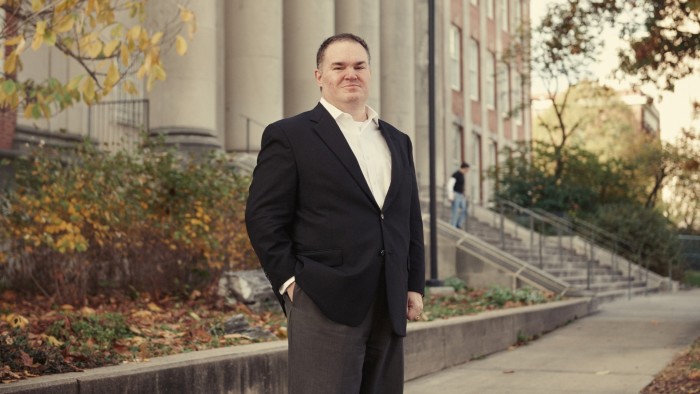The drawn-out downturn in private market returns is hitting one group of investors especially hard: Ivy League university endowments.
Leading US university endowments, many of which allocate outsized portions of their portfolios to private equity and venture capital, have underperformed the university average for the second year in a row, with prominent ones like Yale and Princeton lagging far behind their smaller peers, as the once lucrative asset class suffers from a plunge in dealmaking and stock listings.
Top endowments have long used aggressive exposure to private investments in pursuit of excess returns they believe are out of reach through public markets. Now, as those investments have yet to pay off, some large endowments like Princeton have issued bonds to meet funding needs, according to the New Jersey Educational Facilities Authority.
Six of the eight Ivy League universities reported returns in the 12 months ended June that stood below the higher education average of 10.3%, according to Cambridge Associates, an investment consultancy. Yale and Princeton fared the worst by respectively yielding 5.7% and 3.9%.
The underperformance follows an even weaker 2023 when no Ivy League school was able to match the 6.8% industry average. Yale gained 1.8% while Princeton lost 1.7% last year.
Ivy League endowments, which are among the wealthiest in the world, reported mediocre returns due in large part to their aggressive bets on the illiquid yet high return alternative investments that had fallen victim to the prolonged high interest rate environment.
And the paltry returns are coming at a time when public markets have soared, with the S&P 500 equity index up 57 per cent in the last two years and interest rates on bonds frequently returning more than 4 per cent.
Most Ivy League endowments had earmarked more than 30%, and in the case of Yale and Princeton at least 40%, of their assets to PE and VC by the first half of this year, according to Old Well Labs, a consultancy. In contrast, a survey of 121 university endowments by Cambridge Associates found their allocation to PE and VC had averaged 22% over the same period.
The struggle by elite university endowments to generate excess returns has raised fresh concerns about their investment model that has been emulated by asset allocators from sovereign wealth funds to community foundations around the world.
Britt Harris, former chief investment officer of the $78bn University of Texas/Texas A&M Investment Management Company, the biggest university endowment in the US, said it was “a huge anomaly” for most Ivy League endowments to generate negative or low single-digit returns last year when the risk-free 10-year US treasury yielded more than 4%.
“People underestimate how volatile some of these private investments can be,” Harris said.
Elite university endowments, led by Yale, spearheaded efforts to embrace private markets four decades ago when high inflation and volatile stock performance put many institutions under stress.
“The costs of operating the university are going way up and your income is going down,” said Hunter Lewis, founder of Cambridge Associates and a co-inventor of the investment model with a focus on alternative assets. “Endowments knew they had to do things differently.”
The strategy paid off as Ivy League universities’ prestige and powerful alumni network enabled them to work with well-qualified PE and VC managers who enjoyed a stronger performance than publicly traded stocks and bonds.
Yale’s endowment, which has a 45% allocation to PE and VC, returned 10.3% per year in the 20 years ended June. That compared with 8.5% for a benchmark portfolio of 70% US stocks and 30% bonds over the same period.
“Everybody still believes in having as big an allocation to private equity as possible,” said Roger Vincent, founder of Summation Capital and the former head of private equity at Cornell University’s endowment.
Yet as Ivy League endowments continued to ramp up investment in private markets, their exposure could put them under stress in the event of a downturn.
Public listings as well as mergers and acquisitions, the main exit channels for PE and VC, have been subdued for almost three years since the Federal Reserve hiked interest rates and kept them at a high level to fight inflation.
That has chilled the private markets and the endowments that have piled into them just as the stock market took off. Meanwhile, IPOs, a crucial avenue for companies to exit private ownership and unlock investment gains, have been running about 30% below average in the past few years.
“Given our significant allocation to private assets,” said Matt Mendelsohn, Yale endowment’s chief investment officer, in a statement last month, “we expect to lag during periods of strong public market performance, particularly when exit markets for private assets are depressed.”
Now many Ivy League endowments are scaling back on alternative investments, just as their smaller peers are beginning to tap the field.
Brian Neale, chief investment officer of the $2bn University of Nebraska Foundation, said the endowment planned to increase allocation to private markets from less than 30% to 40% within the next three years so it could hit its 9.5% annual return target.
“For institutions that have the ability and liquidity to consider making investments (in private markets),” he said, “I think it is going to be a very productive era.”
Neale added that UNF had taken steps to control risks arising from its foray into private equity and venture capital.
Vincent, of Summation Capital, said some Ivy League endowments were too slow to trim their allocation to private markets.
“What really happened is (these endowments) were enjoying the great returns they were getting from private equity,” he said. “Nobody wanted the party to stop.”
https://www.ft.com/content/3a6a1ce4-a5cc-4180-9f2f-2665a7e08b1f


